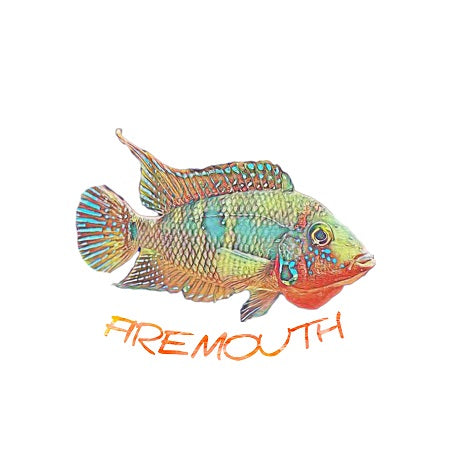Leaves and flowers for your aquarium
Compartir
This blog post was written and provided by Nekka Fernandez for Firemouth Aquaristic, thank you!
------------------------------------
Leaves and flowers
catappa leaves
But they can also be used in a normal home aquarium.
Method 1: Directly in the aquarium
This method is simple: simply place the leaves in your aquarium. After 1-3 days, when the leaves are completely soaked in water, they will sink. Apart from its beneficial effects in terms of water quality, it
They will give a slight amber color to the water. They will also give your aquarium a very natural look thanks to their presence at the bottom of the tank.
How many sheets should you use? Well, the answer is very simple: so many
whatever you want.
But remember that, the more leaves you put in the water, the darker the
water and lower the Ph, although it is unlikely to fall below 6.
You can also use the leaves as a substrate in the tank, along with wood.
peat or a tree trunk with many roots, very useful for creating a
Fantastic Amazon layout suitable for blackwater fish.
As a general rule, if you are not an amber water lover you can still use
a couple of small leaves, then it also depends on the liter of the tank.
Also, if you are thinking of breeding Betta fish, I suggest sinking
one or more leaves so that the female can use them as a hiding place and let them float
at least one sheet. The male betta will probably build his bubble nest under the blade of the floating catapult. With the bubble nest
By pushing up, the leaf will float enough for the eggs
hatch and the fry begin to swim freely in the tank.
If you use the leaves for a larger aquarium, for example to breed tetra,
gourami, apistogram or plecostomus, I would recommend 2-3 large leaves or 4-6
small leaves per 100 liters of water. There is no need to change the blades.
Until they begin to disintegrate in about 3 weeks. Up to a month. If you have
fish like Plecostomus, will feed when they start to melt and not
You will find no trace of them.
With this method, you will need a bag that will be used for the material
organic matter from the leaves to escape. Crumple 2-3 large sheets per 25 liters and
put them in the bag, and leave it in a head filter compartment near
the filter inlet. The leaves will begin to turn the water amber in a couple of days
and they will work for 14-21 days. After that they must be replaced by
new ones.
Method 3: Soak separately
In this method, you will need a bucket full of water in which you will have to
dip the leaves. After a few days, you can pour the colored water
very amber directly in the bathtub. You can also add a tablespoon of salt to the bucket. It is recommended to use an aerator inside to
provide circulation and aeration to the water. Using this method, if you don't want
beautify the water, you can leave the leaves in the bucket until the water loses
its amber color.
This method simply involves making catapult leaf tea, using
bags of Indian almonds. which can also be found in medicine
herbal, or simply extracting the juice, and therefore its beneficial properties.
If you use the tea bag method, make sure the bags are
made of material insoluble in water. It must also be said that the majority of
These tea bags contain on average only one/one and a half leaves of
catapult, so adjust them accordingly. Put the bag or a large sheet
crumpled in a cup and add hot water. Let it cool. And when he does, the
water will take on a very dark color. After that, you can put the water
directly into the aquarium.
Moneta Leaves
Nice little leaf to use in different types of biotope so
cosmopolitan where it will help create that much desired natural effect.
The Flower of the Orinoquia
It is found in the Amazon, Guayana and Serranía de La Macarena, Orinoquía, Pacific, Magdalena Valley.
It grows from the Cochlospermum Orinocense tree. The very feathery seeds, The
indigenous people of the Amazon and the Orinoco line the back of the arrows that
expelled with blowguns. Boil before using for at least 15 minutes.
Lotus Petal
Lotus petals provide a very natural appearance to the bottom of the aquarium,
simulating a river where some seed husks have fallen.
Characteristics of Lotus Petals Botanicals
The tannins from the Lotus petals are slowly released into the water. These
Tannins have many different benefits:
They slightly increase the acidity of the water.
Inhibitory effect on bacteria and diseases.
It turns the water slightly brown.
Helps imitate the natural habitat of animals.
Magnolia Leaves
A multitude of benefits are created thanks to its decomposition, created by
micro fauna. Magnolia leaves are of American origin, and unlike
catappa leaves much more durable in the process of
decomposition.
Ficus Religiosa leaf
reed leaves
These leaves will give a very special touch to your biotope, and their elongated shape will be a very striking detail.
Suitable for black water
Boil before use
Pygmy date palm frond
Feel free to use palm fronds in aquatic displays as an integral part of the aquascape.
A good example is the leaves of Phoenix roebelenii, the "Pgmy date palm" of Southeast Asia.
It is a medium-sized palm tree with beautiful leaves that reach a maximum of 14 inches in length, making them almost a perfect size and configuration for aquatic use.
PREPARATION: Simply rinse them well with fresh water and they will be ready to use. You can soak them overnight in said fresh water; the choice is yours.
ORIGIN: Southeast Asia
Fishtail Palm Stem
It is the flower stem of the Caryota mitis palm, also known as the "Fishtail Palm."
This palm is native to Asia, but is now found in many other parts of the world, including South America.
The stems have a remarkably flexible structure and a surprisingly "spine"-like morphology.
They range in size from around 5" to 5" long. They look amazing spread out on the bottom of a botanical style tank, and add that real flooded forest floor look.
PREPARATION: Boil them for about 20-30 minutes, then quickly soak them in fresh water at room temperature. They sink to the bottom.
ORIGIN: Southeast Asia
Leaves of the guava tree (Psidium guajava)
They provide many benefits to aquariums, including their well-documented antibacterial properties and great value as a complementary food source for ornamental shrimp.
They are harvested after they have fallen naturally, an important point with guava leaves, and will be depleted of chlorophyll, sugars, sap, etc.
They dissolve much more slowly than other sheets and will last longer before needing replacement! They will leach some tannins into the water, but the coloration will not be as pronounced as that created by Catappa leaves, for example.
ORIGIN: Origin: Sandakan, Sabah Malaysia
PREPARATION: We recommend soaking these leaves in boiling water for 10 minutes or so before using them, which will help soften them a bit and make them more palatable to shrimp, as well as encourage a "biofilm" on their surfaces. which provides supplemental grass for shrimp and small fish, and fingerlings.
Banana stem: Banana stems (Musa spientum)
They have a cold look and texture.
They are quite strong.
These are another perfect natural "prop" to simulate tropical stream habitat, where branches, stems and seed pods fall into the water and accumulate, adding to the richness of the environment.
They are very variable, with a size that ranges between 5.08 and 6.35 cm long on average, and can reach 7.62 cm more or less.
They swell PREPARATION: You will need to boil these for at least an hour (sometimes a little longer) to saturate them, because they are quite light and float easily when first submerged!
ORIGIN: Southeast Asia
Nypa Palm Flower
These are yet another botanical, derived from the useful Nypa Palm.
The flower, which is part of the palm fruit cluster, are essentially leaf-like in their "weight", appearance and use. However, they last a little longer and will decompose more slowly than leaves in most systems, while performing a similar role.
They look perfect in virtually any tropical biotope, representing the types of materials that fall from overhanging trees and accumulate on the substrate. They measure approximately 12.7 cm long and 3.17 wide on average.
When incorporated into your biotope, they are perfect for providing feeding and hiding areas for fish and shrimp, which will peck at them as they soften and decompose.
PREPARATION: Like leaving, you can soak them in fresh water at room temperature for a few days to sink them, or better, just boil them for at least 20-30. However, they tend to last longer when soaked, rather than boiled.
ORIGIN: Southeast Asia
The jackfruit tree (Artocarpus heterophyllus)
It is widely known in some parts of the tropical world and has been consumed as food and used in traditional medicines for centuries.
They are particularly abundant in India. Jackfruit trees are often found over rivers in India, dropping the leaves into the water and of course imparting a brown tint as they decompose.
They have been used by fish keepers in India to impart tannins into their aquarium water, much like catappa, guava or other leaves.
Jackfruit contains phytonutrients such as lignans, isoflavones and saponins that have wide-ranging health benefits for humans.
There is some conflicting data regarding the antifungal activity of jackfruit. However, the leaves are believed to exhibit a broad spectrum of antibacterial activity.
In traditional medicine, these leaves are also used to help heal wounds. Do these properties transfer to our fish and shrimp? We are not aware of any scientific studies that have been completed to correlate one way or the other, so for now, we are happy to use these leaves for their aesthetics and proven ability to impart a tannin tint to aquarium water.
They will last quite a while, not as long as Magnolia, but longer than Catappa and Guava, in our experience.
They serve as food for shrimp and prawns.
Boil before use.
Thanks for reading us,


